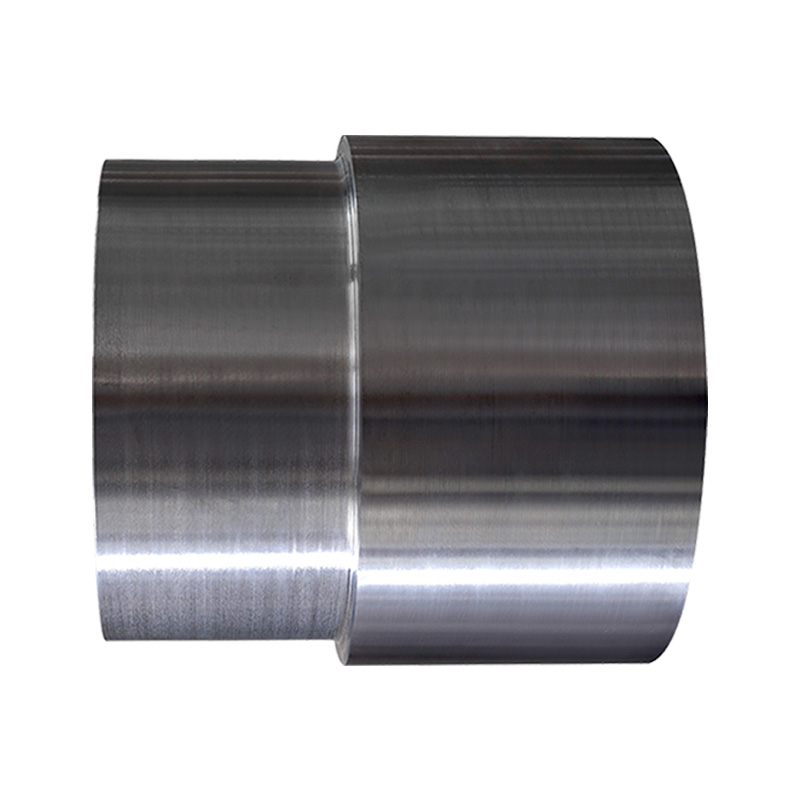Mining machinery forgings require continuous monitoring of their quality data during service. This is not an optional routine, but a lifeline for ensuring safety, maintaining production, controlling costs, and optimizing management. The following are the core reasons:
Early warning to prevent catastrophic failures:
Capture hidden deterioration: The mining conditions are extremely harsh (heavy load, impact, corrosion, wear and tear). Quality data monitoring, such as crack propagation rate, critical dimensional deformation, and abnormal vibration spectra, can detect signs of internal damage or performance degradation before visible damage or sudden equipment shutdown.
Avoiding chain damage: Failure of a critical forging (such as transmission shaft fracture, gear plate cracking) often leads to serious equipment damage and even endangers personnel safety. Continuous monitoring is the last line of defense to prevent such catastrophic accidents.
Maximizing service life and optimizing replacement timing:
Say goodbye to blind replacement: relying solely on experience or fixed cycles for replacement will either waste components that still have a lifespan (replaced too early), or bear the risk of sudden shutdown (replaced too late). Quality data (such as remaining wall thickness, decrease in hardness of critical areas, and cumulative strain in specific areas) provides scientific basis to achieve "replacement as needed" and extract every safety value.
Dealing with differential wear: The wear rate of the same type of forging varies greatly under different working conditions and equipment positions. Monitoring can accurately locate which specific components and parts urgently need maintenance, avoiding a one size fits all approach.
Ensure continuous production and reduce unexpected downtime losses:
The cornerstone of planned maintenance: the cost of mine shutdown is enormous. Reliable quality data is the core input for predictive maintenance. It can schedule inevitable replacements and repairs during production downturns or planned downtime windows, maximizing the compression of unplanned downtime.
Identifying systemic risks: Continuous monitoring can quickly alert design defects, material issues, or process fluctuations if frequent abnormalities are found in the same part or batch of forgings, cutting off the fault chain from the root and improving overall operational reliability.
Validate design and material selection to drive continuous improvement:
Practical performance testing field: No matter how good the laboratory data is, it must ultimately be tested in practice. The quality data during service is the most authentic and brutal performance report. It can verify whether the original material selection, structural design, and manufacturing process truly withstood the ravages of the mining environment.
The basis for optimizing iterations: Where always wears out first? Where is the stress concentration severe? Which materials perform beyond expectations or fail? These data exchanged with blood and tears are the most valuable driving force for the design improvement, material upgrade, and process optimization of the next generation of products. Without it, improvement is like working in isolation.
Strictly control maintenance costs and eliminate waste:
Precise resource allocation: Mine maintenance costs are a bottomless pit. Quality monitoring data guides maintenance efforts to accurately target the weakest and most dangerous links, spending money on the cutting edge. Avoid excessive waste of "comprehensive maintenance" or ineffective investment of "headache doctors".
Evaluate supplier performance: The lifespan and stability of "similar" forgings provided by different suppliers may vary greatly in actual service. Objective quality data is the hard currency for evaluating the true level, cost-effectiveness, and contract performance ability of suppliers.
| Core Reason | Key Points | Impact of NOT Monitoring |
| 1. Prevent Catastrophic Failure | • Detect hidden degradation (cracks, internal flaws, abnormal wear) BEFORE critical failure occurs. | • Unpredictable, catastrophic breakdowns causing severe equipment damage, production collapse, and safety hazards. |
| • Identify stress points & failure precursors invisible during routine inspection. | • Risk of chain-reaction damage destroying adjacent components/systems. | |
| 2. Maximize Service Life & Optimize Replacement | • Track actual wear/performance (thickness loss, hardness decline, strain accumulation) per component/location. | • Blind replacement: Wasting usable life (replaced too soon) or risking sudden failure (replaced too late). |
| • Enable precise, condition-based replacement - "replace only when necessary, maximize every safe hour". | • Inability to manage variable wear rates across identical parts in different conditions/locations. | |
| 3. Ensure Production Continuity & Minimize Downtime | • Foundation for predictive maintenance: Schedule replacements/repairs during planned downtime, avoiding surprises. | • Costly unplanned stoppages: Production halts due to unexpected failures, causing significant revenue loss. |
| • Spot systemic issues early: Identify recurring problems with specific parts/batches/locations signaling design/material/process flaws. | • Chronic reliability issues remain hidden, leading to repeat failures and wasted troubleshooting effort. | |
| 4. Validate Design/Material/Process & Drive Improvement | • Provide real-world performance proof: Is the forging truly surviving the brutal mine environment as intended? | • Stagnant technology: Reliance on lab data & theory; no actual feedback to improve future designs, materials, or processes. |
| • Identify weaknesses & strengths: Pinpoint exact failure modes, wear locations, stress concentrations, and unexpectedly good/bad performers. | • Missed opportunities to enhance durability, efficiency, and cost-effectiveness in next-generation components. | |
| 5. Control Maintenance Costs & Eliminate Waste | • Direct resources precisely: Focus maintenance spend ONLY where and when data shows it's critically needed. | • Costly over-maintenance (replacing good parts) or under-maintenance (leading to bigger, more expensive failures later). |
| • Objectively evaluate suppliers: Compare actual field performance & lifespan data across different suppliers. | • Inability to identify truly reliable or cost-effective suppliers; stuck with poor performers due to lack of raw truth. | |
| SUMMARY | Continuous monitoring is NON-NEGOTIABLE: It's the vital early warning system, life-extending tool, downtime preventer, and truth-teller for mine operations. | Ignoring it is gambling: Gambling with worker safety, production targets, maintenance budgets, and continuous improvement. NO EXCUSES. |

 英语
英语 德语
德语 阿拉伯语
阿拉伯语












